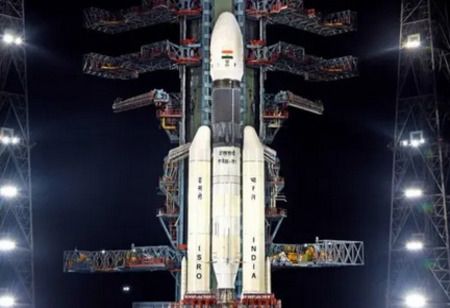
ISRO Targets Seven Missions, Eyes Unmanned Gaganyaan Launch

 The Indian Space Research Organization has established a goal to conduct seven missions, including the first unmanned mission of the ambitious Gaganyaan program, prior to March 2026, according to Chairman V Narayanan's announcement on Sunday.
The Indian Space Research Organization has established a goal to conduct seven missions, including the first unmanned mission of the ambitious Gaganyaan program, prior to March 2026, according to Chairman V Narayanan's announcement on Sunday.
The space organization based in Bengaluru has outlined plans for three unmanned missions preceding the manned mission within the Gaganyaan program, with the initial unmanned launch designated as the 'G1 Mission' anticipated by March 2026, he stated.
These remarks were made by Narayanan while addressing media personnel following the successful deployment of the CMS-03 communication satellite using an LVM3-M05 rocket from the launch facility.
Also Read: Thales Appoints Ankur Kanaglekar as Vice-President India
Regarding upcoming mission schedules, Narayanan, who also serves as Secretary of the Department of Space, announced that seven missions are scheduled before March 2026 concludes.
This plan aligns with Prime Minister Narendra Modi's vision for ISRO to complete 50 rocket launches within the upcoming five-year timeframe.
Providing details about the scheduled missions, he mentioned that following Sunday's LVM3-M05 launch, ISRO will conduct another LVM3 rocket mission carrying a commercial communication satellite for a customer.
The commercial division of ISRO is NewSpace India Ltd (NSIL).
Narayanan revealed that ISRO has also scheduled the PSLV-N1 technology development mission, planned for launch before the current financial year ends.
Also Read: BCIC Inks MoU with City of Osaka
On Sunday, industry organizations extended congratulations to the ISRO for successfully launching CMS-03, which became the heaviest satellite ever launched from Indian territory.
Weighing 4410 kg, the CMS-03 satellite, which serves as a replacement for the Indian Navy's GSAT-7, was successfully positioned in Geosynchronous Transfer Orbit (GTO) by the LVM-3 rocket on Sunday evening.
Subba Rao Pavuluri, who chairs Ananth Technologies Pvt. Ltd (ATL) and serves as President of the Satcom Industry Association-India, noted that the successful deployment of CMS-3, a multi-band military communication satellite, showcased ISRO's ability to provide sophisticated communication infrastructure for the country.
ATL provided numerous essential subsystems for the LVM-3 rocket, encompassing control electronics modules, navigation and guidance equipment, electro-mechanical actuator mechanisms, avionics power supply units, and various other vital components.
Also Read: CloudKeeper Names Sanjeev Mittal as the New CPTO
According to Bhatt, the satellite represents a transformative technology for maritime and national defense capabilities, offering sophisticated, protected communication networks that hold strategic importance for both the Indian Ocean Region and the mainland territory.